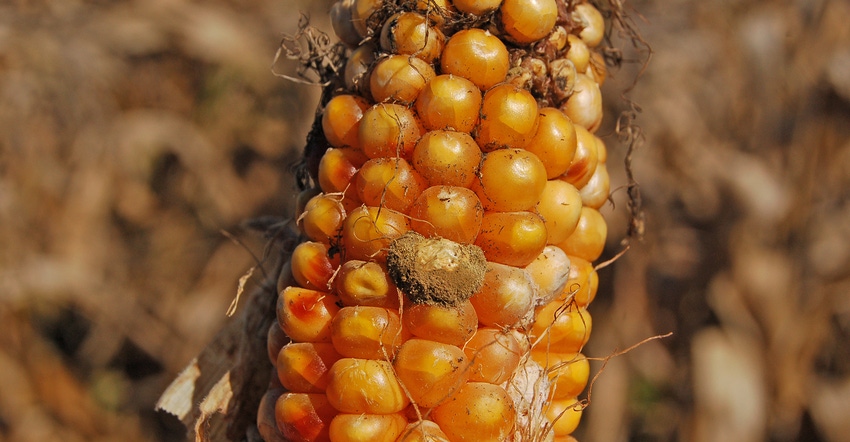October 1, 2019

This year saw one of the worst corn planting seasons in a long time. It kept raining when we wanted to plant in April and May. To add insult to injury, after we finally planted, it turned hot and dry in many places.
I expect lots of corn to be harvested with high moisture levels. This may result in lower test weight grain, which may affect price.
Grain moisture is important because of the cost of drying, but why is test weight important? Here are 17 facts about test weight and why it’s significant:
1. What test weight is. Test weight is the ratio between weight and volume of grain, measured as weight of grain that fills a quart container. There are 32 quarts in a bushel.
2. Market basis. Corn grain is marketed in the U.S. as 56 pounds test weight per bushel.
3. Corn grading. Corn with 56 pounds per bushel test weight is considered No. 1 yellow corn. Corn at 54 pounds per bushel is No. 2 yellow corn at 15% moisture.
4. Hauling factor. Farmers can haul more bushels of high test-weight grain in a semitrailer than low test-weight grain.
5. Elevator discounts. Corn with lower than 56 pounds per bushel test weight may be discounted, but no credit is given for higher test-weight corn.
6. Quality factor. Grain with higher test weight is generally considered better-quality corn.
7. Hybrid connection. Genetics plays an important role in test weight determination. However, there’s no correlation between test weight and yield potential of a hybrid.
8. Corn breeder’s dream. Some high-yielding hybrids have average test weight. However, during my work as a corn breeder, I developed a couple of widely grown hybrids with high yields and high test weight. Corn breeders dream about developing these hybrids.
9. Moisture factor. As kernel moisture drops, test weight increases. Dry matter of the grain weighs more than moisture.
10. Corn appearance. Higher test-weight grain with orange color has greater eye appeal. Plus, its integrity is maintained during shipping. Foreign customers generally prefer it to lower test-weight, chaffy grain.
11. Multiple factors. Many factors besides genetics can affect test weight in any one season, including weather.
12. Genetic potential. Hybrids with genetic potential for higher test weight generally produce corn with higher test weight.
13. Early planting. Although it wasn’t possible in most places this year, earlier planting leads to higher test-weight corn.
14. Grain fill conditions. Higher temperatures with ample moisture during grain fill tend to increase test weight if kernels are fully mature.
15. Dry weather impact. Drought stress affected some areas in 2019. This decreases test weight because it affects photosynthesis.
16. Leaf disease timing. Leaf diseases such as gray leaf spot, southern rust, northern corn leaf blight, anthracnose leaf blight, tar spot and Goss’s wilt decrease test weight because they interrupt grain fill.
17. Ear rot effect. Ear rots such as diplodia, gibberella and aspergillus often result in lower test weight.
Nanda is director of genetics for Seed Genetics-Direct, Jeffersonville, Ohio. Email him at [email protected] or call him at 317-910-9876.
About the Author(s)
You May Also Like






